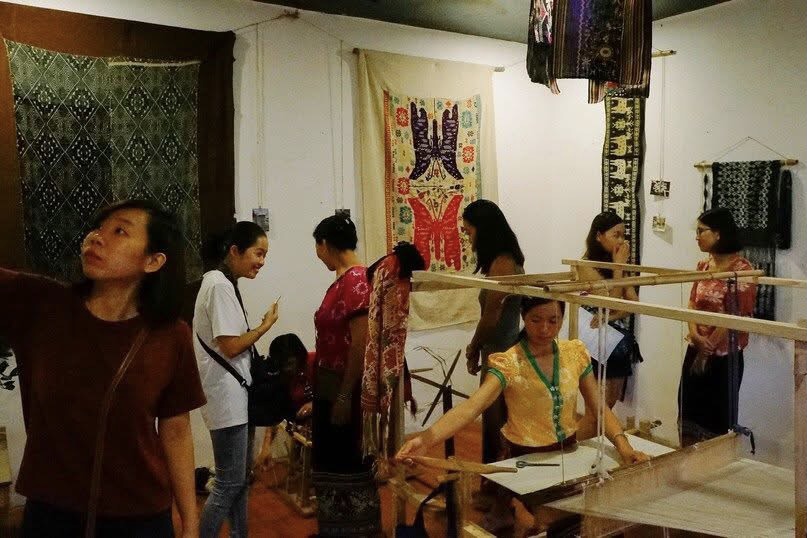Pattern Story, Thai ethnic textile, Nghe An, 2017
The Thái people often say: “Hands lowered, we see the clouds; hands raised, we see the flowers.” Brocade weaving is a profound cultural practice, accompanying a Thái person from birth, through adulthood, until their return to the “sky.” Each piece of brocade begins with cotton or silkworms, followed by spinning, natural dyeing, weaving, and embroidery—a wholehearted, creative, and highly skilled process. The artistry of Thái women shines most clearly in the creation of patterns on the fabric. This work feels almost sacred, passed down through generations for hundreds of years.
However, as modern life accelerates and cultural influences reach every Thái village, traditional craft practices are gradually disappearing. Many motifs have already been lost, or can only be reproduced by a few elderly artisans. Few young people remain interested in continuing the traditional craft.
Nature is reflected in the many textile motifs—rhombuses, flowers, the sun, birds, elephants, deer, tigers, or horsemen—expressed in symbolic, stylized forms. Most motifs are symmetrical, reflecting concepts of harmony, eternal life, the cosmos, yin–yang, the earth, and the universe. These patterns appear on skirts, scarves, blankets, and ancient Thái quilts.
Ms. Sam Thị Bích, Head of the Hoa Tiến Brocade Cooperative, shared:
“In the past there were no weather forecasts, so people looked to animals—dragonflies or ducks flying low or high—as signs of rain, sunshine, storms, or floods. Because of this, the Thái embroidered these animals onto their textiles as a way of showing gratitude. They also used dragons or elephants in their decorations because these animals symbolize strength. For the Thái, patterns are very important; they carry strength and love, joy and happiness. All of that is contained within the brocade.”
The event will include a conversation with a Thái ethnic artisan, who will share cultural stories and insights from traditional craft villages. Over the weekend, embroidery workshops and weaving demonstrations will allow participants in Hanoi to experience traditional techniques firsthand and try creating ethnic motifs themselves.
Through these activities, the event highlights the message of the Textile Linker project: preserving and developing handicraft traditions cannot be done by a single individual. The project seeks to connect artisans with designers, artists, researchers, businesses, and consumers so that traditional crafts can continue to evolve and thrive in modern life.







